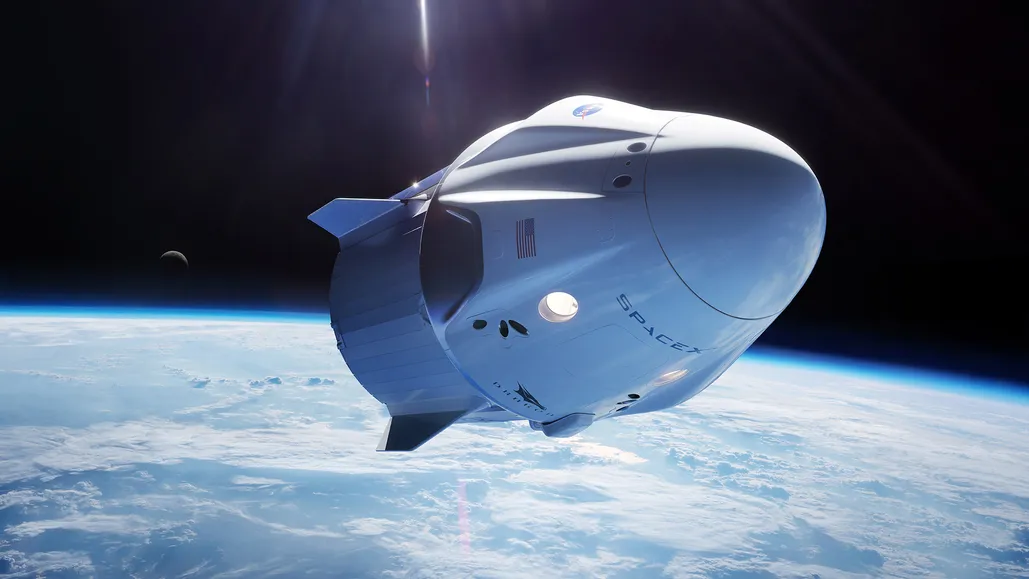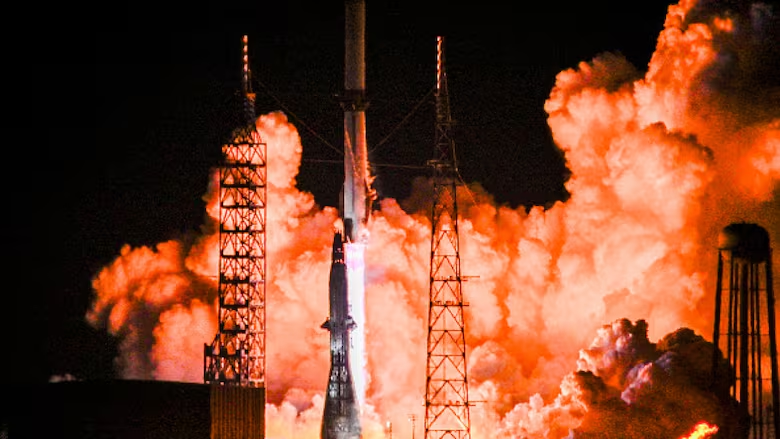
Image Source: https://www.jpl.nasa.gov/missions/europa-clipper/
NASA’s Europa Clipper Mission: Unlocking the Mysteries of Jupiter’s Icy Moon
The Europa Clipper mission, one of NASA’s most ambitious and highly anticipated space exploration endeavors, is set to explore Europa, one of Jupiter’s 79 known moons. Europa has long been a focus of intrigue for scientists due to its potential to harbor conditions suitable for life. This mission aims to investigate whether the moon could have the necessary ingredients for life, primarily by analyzing its icy crust and the ocean believed to exist beneath it. Scheduled for launch in October 2024, Europa Clipper marks a significant milestone in planetary science and astrobiology.
Why Europa?
Europa stands out among celestial bodies for several reasons. Discovered by Galileo Galilei in 1610, this moon has been the subject of intense study in recent decades because:
- Subsurface Ocean Hypothesis: Europa is believed to have a vast, global ocean of liquid water beneath its thick icy crust. Scientists estimate that the ocean contains twice as much water as all of Earth’s oceans combined. Water is a critical ingredient for life, making Europa a prime candidate for the search for extraterrestrial organisms.
- Tidal Heating: Unlike Earth, Europa is subject to intense tidal forces from Jupiter’s immense gravity. These forces flex and heat the moon’s interior, potentially providing energy to keep the subsurface ocean in a liquid state. This phenomenon, known as tidal heating, could also fuel hydrothermal activity, similar to what we see at deep-sea vents on Earth, where life thrives without sunlight.
- Surface Features: Europa’s surface is a dynamic and active environment. It is covered by an ice shell, crisscrossed with cracks and ridges, and shows evidence of potential cryovolcanism (volcanoes that spew water or ice rather than lava). This activity indicates a continuous interaction between the surface and the subsurface ocean, suggesting that material from the ocean might reach the surface.
Mission Overview
The Europa Clipper mission is not designed to land on the moon or drill into its icy surface. Instead, it will orbit Jupiter and conduct dozens of flybys of Europa, capturing detailed data with each pass. These flybys will help map Europa’s surface, study its composition, and gather information about the moon’s subsurface ocean.
Key Objectives:
- Characterize the Ice Shell and Ocean: Using a suite of instruments, Europa Clipper will investigate the thickness of Europa’s ice shell and search for lakes within it. It will also study the salinity, depth, and properties of the subsurface ocean.
- Analyze Surface Chemistry: Scientists are keen to understand the composition of Europa’s surface and whether the materials there are connected to the ocean below. Europa Clipper will look for salts, organic compounds, and other chemicals that might indicate the presence of life or conditions favorable to life.
- Geology and Surface Features: The mission will map Europa’s surface in unprecedented detail, documenting its cracks, ridges, pits, and other features. Understanding the geology will provide insights into the moon’s dynamic processes and how the surface and subsurface interact.
- Look for Plumes: Previous observations from the Hubble Space Telescope and the Galileo spacecraft suggested that Europa might occasionally vent water vapor plumes from its surface, much like Saturn’s moon Enceladus. Europa Clipper will attempt to fly through these plumes if detected, analyzing their composition and searching for signs of life.
Scientific Instruments
To achieve these objectives, Europa Clipper will carry a diverse array of cutting-edge scientific instruments. These tools will work together to collect data during the flybys, focusing on everything from surface imaging to subsurface exploration. Some of the key instruments include:
- Ice-Penetrating Radar (REASON): This radar will allow scientists to see beneath Europa’s surface, providing a clear picture of the ice shell’s structure and the water bodies that may lie within it.
- Spectrometers (MASPEX, MISE): These instruments will analyze the chemical composition of Europa’s surface and its thin atmosphere. They’ll look for signs of organic compounds, salts, and other key materials.
- Magnetometer (ICEMAG): Europa’s magnetic field will be measured to infer details about the ocean beneath, including its depth and salinity.
- Cameras (EIS): High-resolution cameras will capture detailed images of Europa’s surface, mapping features as small as 50 feet (15 meters) across.
- Thermal Imager (E-THEMIS): This device will scan for thermal anomalies on the surface, indicating areas where the ice shell might be thinner or where subsurface activity is present.
Significance for Astrobiology
Europa Clipper is not specifically designed to detect life, but it will provide critical data to help scientists assess whether Europa has the necessary conditions for life to exist. By studying the moon’s ocean, ice, and surface chemistry, the mission will help answer key questions about its habitability.
The detection of organic molecules or other biosignatures in Europa’s ocean or surface material would be an extraordinary discovery, though it’s important to note that these molecules alone wouldn’t confirm life. They could, however, indicate that Europa has the building blocks necessary for life, similar to environments where life exists on Earth.
Launch and Journey
The mission is set to launch aboard a SpaceX Falcon Heavy rocket in October 2024. After leaving Earth, Europa Clipper will embark on a five-and-a-half-year journey through the solar system, using gravity assists from Mars and Earth to reach Jupiter. Once in orbit around Jupiter, Europa Clipper will begin its series of flybys, scheduled to take place over approximately four years.
International Collaboration
While NASA leads the Europa Clipper mission, it involves collaboration with multiple international partners. The European Space Agency (ESA), for instance, is also launching a mission, JUICE (Jupiter Icy Moons Explorer), which will study Europa as well as other Jovian moons like Ganymede and Callisto. The two missions will complement each other, providing a broader understanding of Jupiter’s moons.
Challenges and Risks
As with any mission of this magnitude, Europa Clipper faces significant challenges. The spacecraft must navigate the harsh radiation environment around Jupiter, which could potentially damage its instruments. Engineers have taken extensive precautions to shield the spacecraft, but radiation remains a concern.
Additionally, the mission’s success depends on accurately navigating the spacecraft during its flybys of Europa. Each pass must be carefully timed to optimize data collection while conserving fuel for future maneuvers.
Looking Ahead
Europa Clipper represents a crucial step in our exploration of the outer solar system. While it may not find definitive evidence of life, the mission will lay the groundwork for future explorations, possibly even a mission to land on Europa or sample its plumes directly.
In the grand scheme of planetary exploration, Europa Clipper is a major leap forward in understanding whether other worlds in our solar system might support life. By unlocking Europa’s secrets, this mission could reshape our understanding of habitability and the potential for life beyond Earth.
Conclusion
The Europa Clipper mission is an exciting endeavor that could revolutionize our knowledge of one of the most intriguing moons in the solar system. By investigating the hidden ocean beneath Europa’s icy crust, studying its dynamic surface, and searching for clues about its potential for life, this mission will help answer some of humanity’s most profound questions about the universe and our place within it. As the mission prepares for launch in 2024, the world waits in anticipation for the incredible discoveries it is bound to make.




Leave a Reply